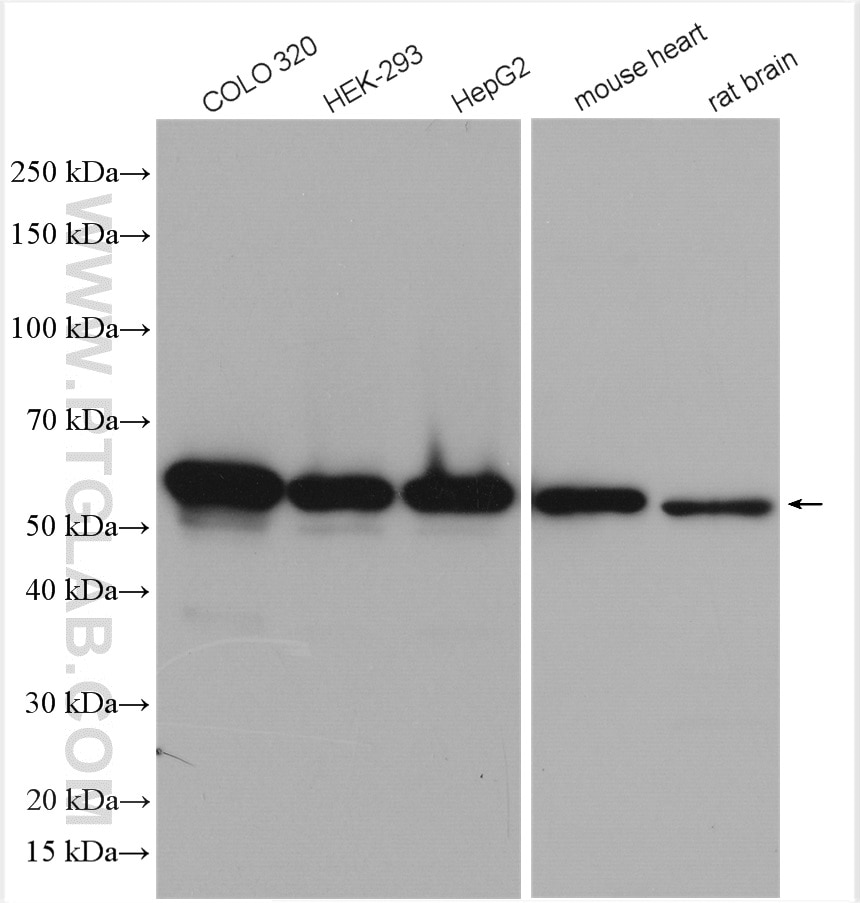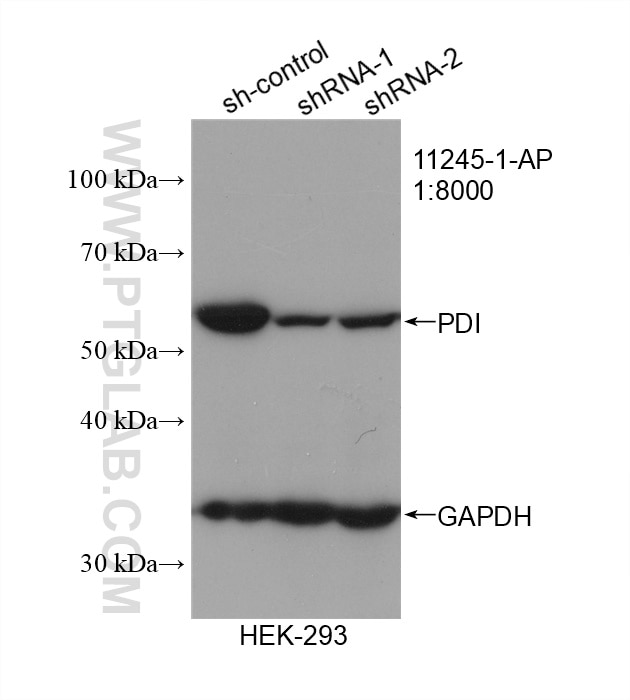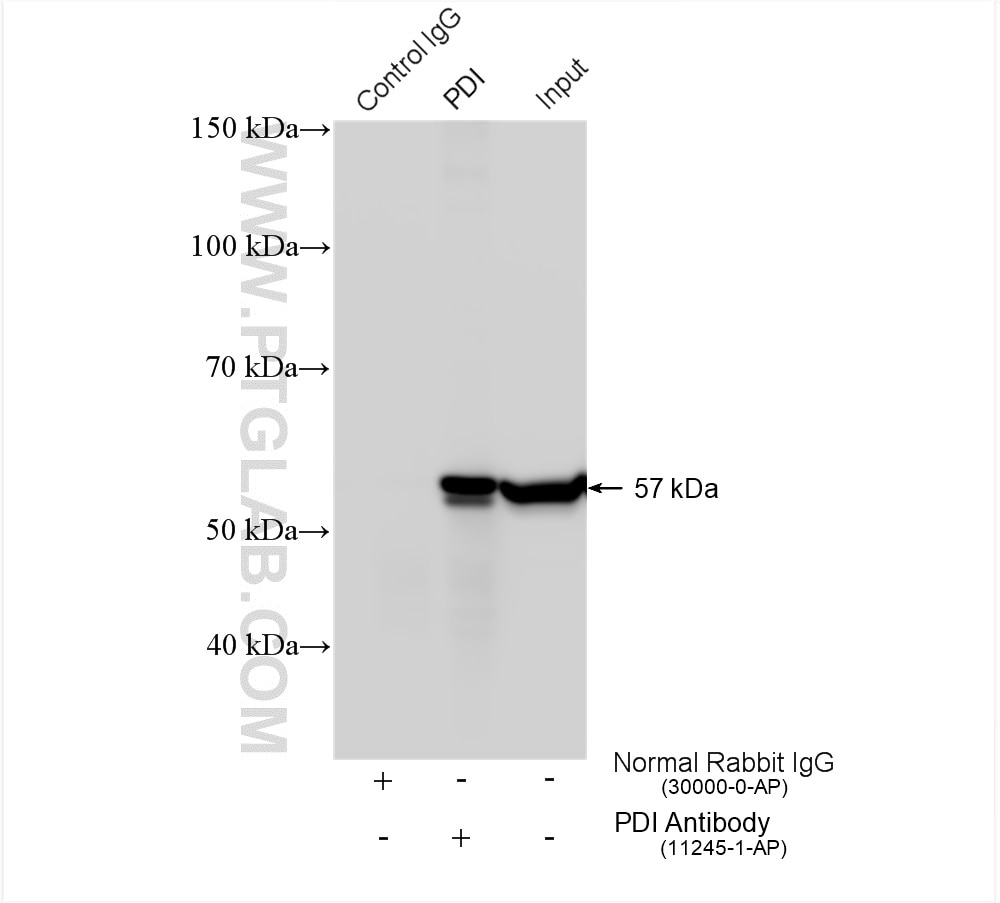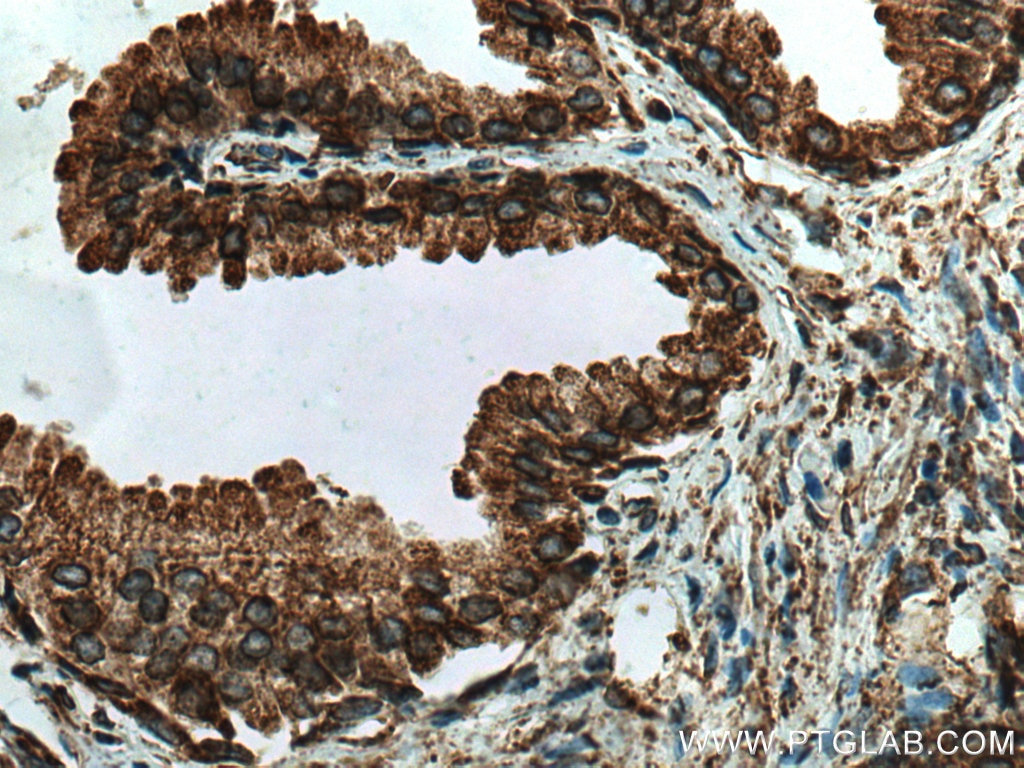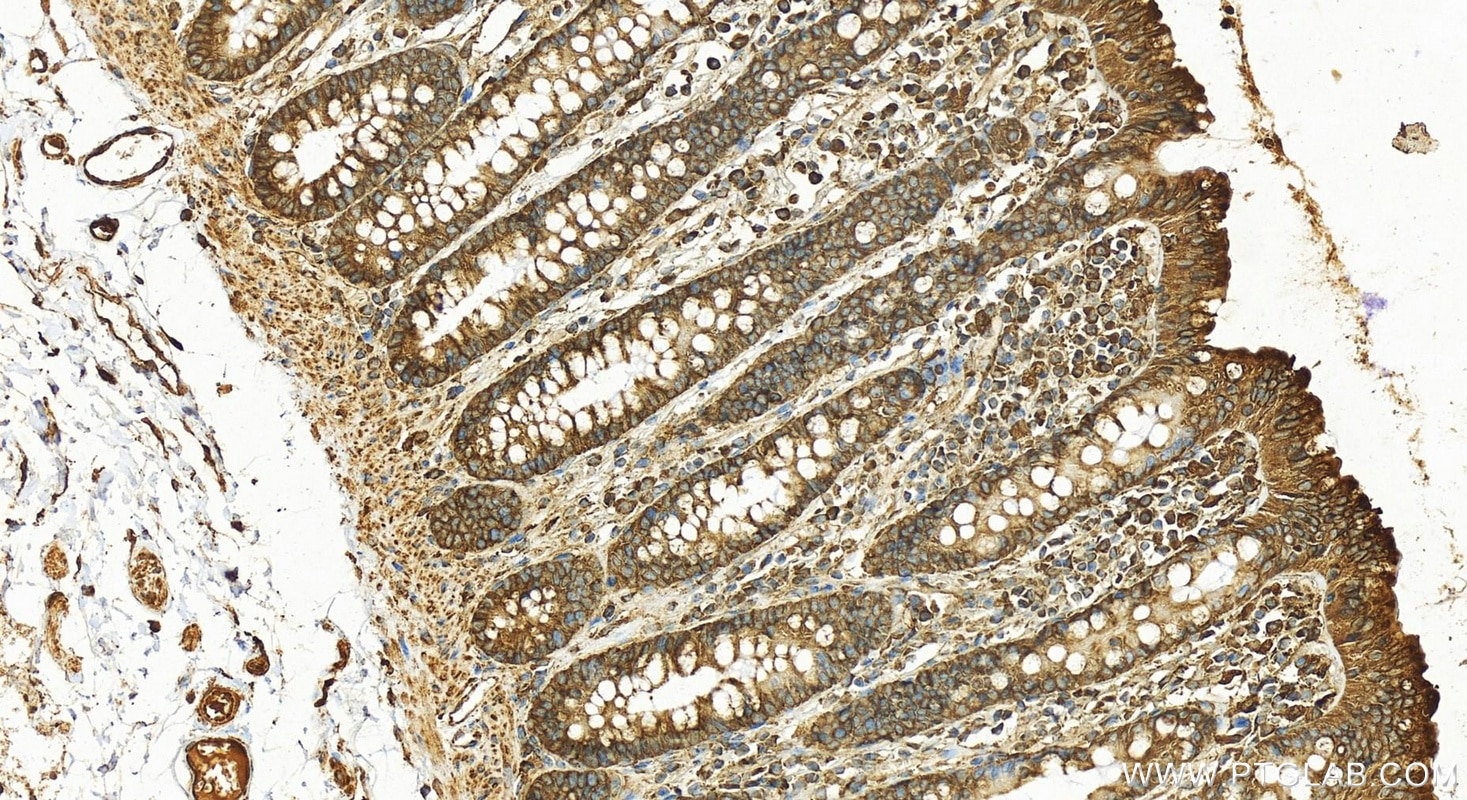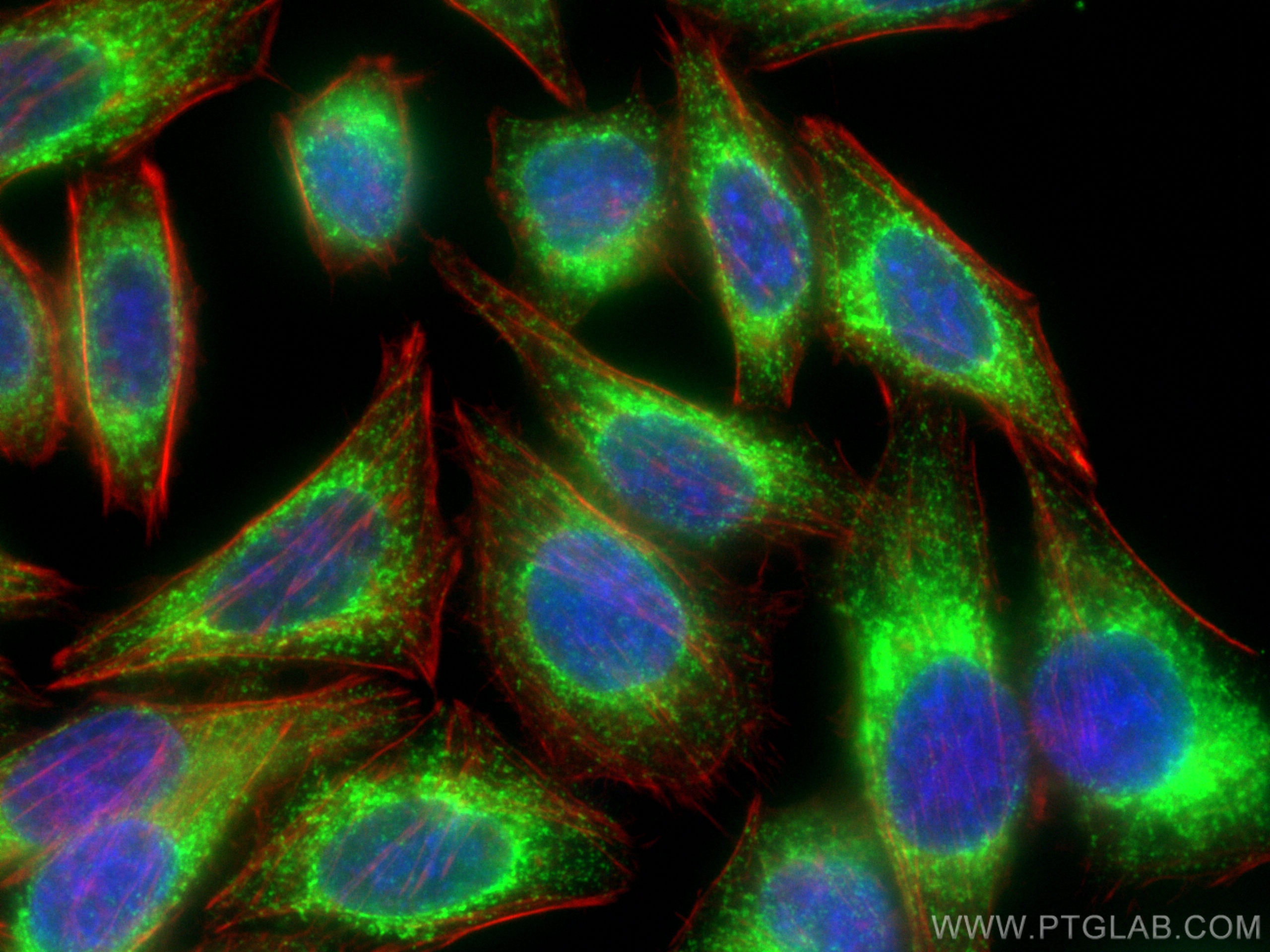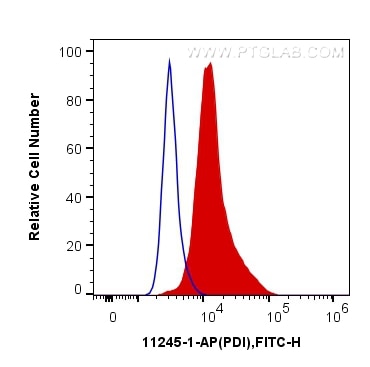- Featured Product
- KD/KO Validated
PDI Polyklonaler Antikörper
PDI Polyklonal Antikörper für WB, IHC, IF/ICC, FC (Intra), IP, ELISA
Wirt / Isotyp
Kaninchen / IgG
Getestete Reaktivität
human, Maus, Ratte, Zebrafisch und mehr (2)
Anwendung
WB, IHC, IF/ICC, FC (Intra), IP, ELISA
Konjugation
Unkonjugiert
Kat-Nr. : 11245-1-AP
Synonyme
Geprüfte Anwendungen
| Erfolgreiche Detektion in WB | COLO 320-Zellen, HEK-293-Zellen, HepG2-Zellen, Mausherzgewebe, Rattenhirngewebe |
| Erfolgreiche IP | HepG2-Zellen |
| Erfolgreiche Detektion in IHC | humanes Prostatakarzinomgewebe, humanes Kolongewebe Hinweis: Antigendemaskierung mit TE-Puffer pH 9,0 empfohlen. (*) Wahlweise kann die Antigendemaskierung auch mit Citratpuffer pH 6,0 erfolgen. |
| Erfolgreiche Detektion in IF/ICC | HepG2-Zellen |
| Erfolgreiche Detektion in FC (Intra) | HeLa-Zellen |
Empfohlene Verdünnung
| Anwendung | Verdünnung |
|---|---|
| Western Blot (WB) | WB : 1:500-1:2000 |
| Immunpräzipitation (IP) | IP : 0.5-4.0 ug for 1.0-3.0 mg of total protein lysate |
| Immunhistochemie (IHC) | IHC : 1:50-1:500 |
| Immunfluoreszenz (IF)/ICC | IF/ICC : 1:200-1:800 |
| Durchflusszytometrie (FC) (INTRA) | FC (INTRA) : 0.40 ug per 10^6 cells in a 100 µl suspension |
| It is recommended that this reagent should be titrated in each testing system to obtain optimal results. | |
| Sample-dependent, check data in validation data gallery | |
Veröffentlichte Anwendungen
| KD/KO | See 4 publications below |
| WB | See 40 publications below |
| IHC | See 12 publications below |
| IF | See 20 publications below |
| FC | See 1 publications below |
Produktinformation
11245-1-AP bindet in WB, IHC, IF/ICC, FC (Intra), IP, ELISA PDI und zeigt Reaktivität mit human, Maus, Ratten, Zebrafisch
| Getestete Reaktivität | human, Maus, Ratte, Zebrafisch |
| In Publikationen genannte Reaktivität | human, Affe, Hausschwein, Maus, Ratte |
| Wirt / Isotyp | Kaninchen / IgG |
| Klonalität | Polyklonal |
| Typ | Antikörper |
| Immunogen | PDI fusion protein Ag1747 |
| Vollständiger Name | prolyl 4-hydroxylase, beta polypeptide |
| Berechnetes Molekulargewicht | 57 kDa |
| Beobachtetes Molekulargewicht | 57 kDa |
| GenBank-Zugangsnummer | BC014504 |
| Gene symbol | PDI |
| Gene ID (NCBI) | 5034 |
| Konjugation | Unkonjugiert |
| Form | Liquid |
| Reinigungsmethode | Antigen-Affinitätsreinigung |
| Lagerungspuffer | PBS with 0.02% sodium azide and 50% glycerol |
| Lagerungsbedingungen | Bei -20°C lagern. Nach dem Versand ein Jahr lang stabil Aliquotieren ist bei -20oC Lagerung nicht notwendig. 20ul Größen enthalten 0,1% BSA. |
Hintergrundinformationen
PDIA1(Protein disulfide-isomerase) is also named as ERBA2L, PDI, P4HB, PO4DB. It is a multifunctional protein that catalyzes the formation, breakage and rearrangement of disulfide bonds. In some cell types, it seems to be secreted or associated with the plasma membrane, where it undergoes constant shedding and replacement from intracellular sources.It can exsit as homodimer and monomers and homotetramers may also occur(PMID:12095988).
Protokolle
| PRODUKTSPEZIFISCHE PROTOKOLLE | |
|---|---|
| WB protocol for PDI antibody 11245-1-AP | Protokoll herunterladen |
| IHC protocol for PDI antibody 11245-1-AP | Protokoll herunterladenl |
| IF protocol for PDI antibody 11245-1-AP | Protokoll herunterladen |
| IP protocol for PDI antibody 11245-1-AP | Protokoll herunterladen |
| FC protocol for PDI antibody 11245-1-AP | Download protocol |
| STANDARD-PROTOKOLLE | |
|---|---|
| Klicken Sie hier, um unsere Standardprotokolle anzuzeigen |
Publikationen
| Species | Application | Title |
|---|---|---|
J Thromb Haemost VWF-Gly2752Ser, a novel non-cysteine substitution variant in the CK domain, exhibits severe secretory impairment by hampering C-terminal dimer formation. | ||
Mol Cell The oncomicropeptide APPLE promotes hematopoietic malignancy by enhancing translation initiation. | ||
J Extracell Vesicles Extracellular vesicles derived from oesophageal cancer containing P4HB promote muscle wasting via regulating PHGDH/Bcl-2/caspase-3 pathway. |
Rezensionen
The reviews below have been submitted by verified Proteintech customers who received an incentive for providing their feedback.
FH Udesh (Verified Customer) (08-19-2024) | Worked well at 1:2000
 |
FH Anastasia (Verified Customer) (08-07-2024) |
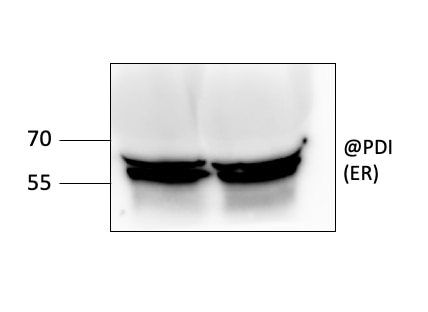 |
